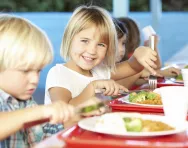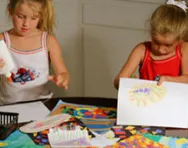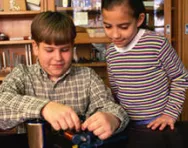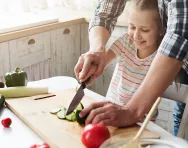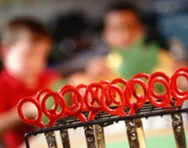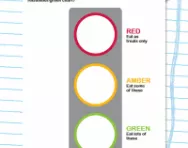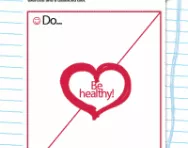Important update from TheSchoolRun
For the past 13 years, TheSchoolRun has been run by a small team of mums working from home, dedicated to providing quality educational resources to primary school parents. Unfortunately, rising supplier costs and falling revenue have made it impossible for us to continue operating, and we’ve had to make the difficult decision to close. The good news: We’ve arranged for another educational provider to take over many of our resources. These will be hosted on a new portal, where the content will be updated and expanded to support your child’s learning.
What this means for subscribers:
- Your subscription is still active, and for now, you can keep using the website as normal — just log in with your usual details to access all our articles and resources*.
- In a few months, all resources will move to the new portal. You’ll continue to have access there until your subscription ends. We’ll send you full details nearer the time.
- As a thank you for your support, we’ll also be sending you 16 primary school eBooks (worth £108.84) to download and keep.
A few changes to be aware of:
- The Learning Journey weekly email has ended, but your child’s plan will still be updated on your dashboard each Monday. Just log in to see the recommended worksheets.
- The 11+ weekly emails have now ended. We sent you all the remaining emails in the series at the end of March — please check your inbox (and spam folder) if you haven’t seen them. You can also follow the full programme here: 11+ Learning Journey.
If you have any questions, please contact us at [email protected]. Thank you for being part of our journey it’s been a privilege to support your family’s learning.
*If you need to reset your password, it will still work as usual. Please check your spam folder if the reset email doesn’t appear in your inbox.
Cooking and nutrition in primary schools
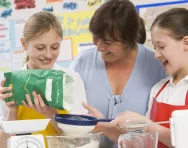
From September 2014, primary school children will have to learn about food, cooking and nutrition under the national curriculum. It’s the first time that the subject has ever been compulsory in UK schools, and is a response to the School Food Plan (SFP): a 2013 document put together by a panel of experts, including restaurateurs, nutrition specialists, teachers and school cooks, aimed at improving the quality of both food education and the food served in schools.
The SFP recommended that food education should be mandatory for all children in Key Stages 1, 2 and 3, a proposal that the Government adopted in its new curriculum.
Why food education matters
Learning about food, how to prepare it and the principles of a healthy diet is important for every child. Every year, the NHS spends £10billion treating people with diet-related illnesses, from obesity to diabetes to heart disease.
Almost 20 per cent of children are obese by the time they leave primary school, and families on lower incomes tend to be the most disadvantaged in terms of their culinary knowledge and skills.
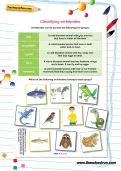

Download Fantastic Science Resources Today!
- Experiments And Science Fun pack
- Science Learning Programme for each school year
- All the instructions, questions and information you need
Cooking and nutrition falls within the design and technology curriculum.
The new curriculum aims to teach children how to cook, with an emphasis on savoury dishes, and how to apply the principles of healthy eating and good nutrition. It recognises that cooking is an important life skill that will help children to feed themselves and others healthy and affordable food, now and in the future, potentially halting – and even reversing – the growth of diet-related illnesses.
Cooking and nutrition in Key Stage 1
In Key Stage 1 (Years 1 and 2), children will be taught:
- To use the basic principles of a healthy and varied diet to prepare dishes
- To understand where food comes from
Cooking and nutrition in Key Stage 2
Key Stage 2 children (Years 3, 4, 5 and 6) will learn:
- To understand and apply the principles of a healthy and varied diet
- To prepare and cook a variety of predominantly savoury dishes using a range of cooking techniques
- To understand seasonality and know where and how a variety of ingredients are grown, reared, caught and processed
Cooking and nutrition in practice
The national curriculum doesn’t give specific guidance about how it should teach cooking and nutrition, so it’s up to individual schools to decide how to deliver their lessons. A number of organisations, including the Children’s Food Trust and the Jamie Oliver Food Foundation, are helping by putting together programmes of study that schools may choose to follow.
Primary school children may learn about cooking and nutrition through activities such as:
- Preparing and cooking a variety of dishes, including hot and cold meals, desserts, packed lunches, salads, etc.
- Using a variety of cooking equipment: scales, knives, utensils, etc.
- Growing and harvesting fruit and vegetables
- Writing meal plans and shopping lists
- Taste-testing different foods
- Learning about food hygiene and safety, including getting their food preparation area ready, and clearing up afterwards
- Learning to read and understand food labels
- Learning about farming and agriculture
- Learning about nutritional principles such as a balanced diet, five-a-day etc
The Children’s Food Trust recommends that children spend at least 24 hours in each Key Stage studying cooking and nutrition, with most of that time focused on practical cookery. It’s also recommended that practical lessons are delivered in groups of no more than 18 children.
What’s not so good?
Currently, only 25 per cent of primary schools have teaching kitchens, which may mean that your child’s cooking and nutrition lessons could be limited by the facilities available. However, there are plenty of ways for children to learn about food, even without extensive facilities. For example, they can practise techniques like peeling, chopping and mashing; use portable facilities like electric hotplates; or prepare food in the classroom that can then be cooked at home, such as bread dough.
The SFP expert panel also points out that the curriculum is lacking in detail about what schools should be teaching, and doesn’t specify how much time should be spent on cooking and nutrition lessons, meaning that the subject may be squeezed out in favour of more academic subjects.
Teachers have also raised concerns about health and safety, especially in Key Stage 2, where it’s less likely that classes will have a teaching assistant as well as a teacher. It’s thought that schools will rely heavily on parent volunteers to help with practical sessions.
7 ways to help your child at home
The SFP recognises that learning about food and nutrition should be a partnership between home and school. So how can you help your child to build their practical cookery skills and knowledge at home?
- Let them help with family meals. Cooking doesn’t need to be a special rainy-day activity; instead, get your child involved with everyday food preparation, from pouring their own breakfast cereal to helping to peel the potatoes for dinner.
- Involve them in meal planning. Sit down with your child to come up with a list of meals for the week, and take the opportunity to talk about a balanced diet.
- Tailor kitchen skills to their age. For example, you could pre-cook vegetables so they’re easier for your five-year-old to chop, while your 10-year-old might be able to use a sharp knife to chop raw veg under supervision.
- Buy a kids’ cookbook full of appealing, easy to cook recipes. We love Good Food: 101 recipes for kids (£4.99, BBC).
- Take a visit to a working farm or pick-your-own plantation to give your child a behind-the-scenes view of the food production process.
- Grow some fruit or vegetables at home. Don’t worry if you don’t have garden space: growing herbs in pots or salad in a window box will still help your child understand where their food comes from.
- Let your Key Stage 2 child invite a few friends round for a dinner party. Encourage them to plan the menu, prepare and serve the food (and clear up afterwards!).

